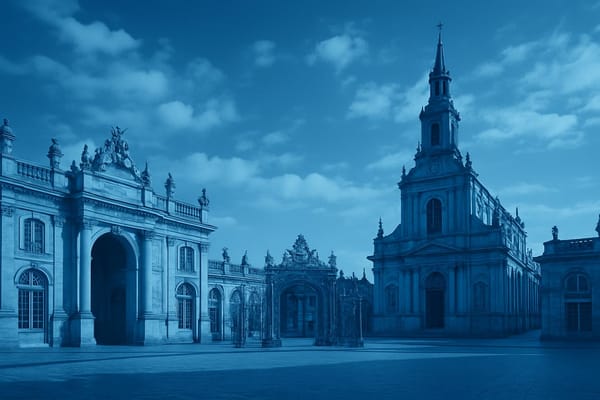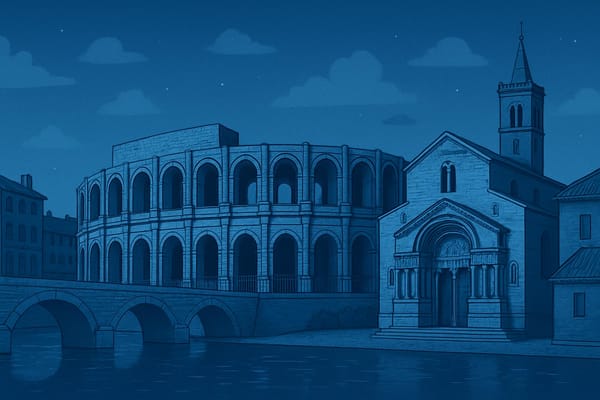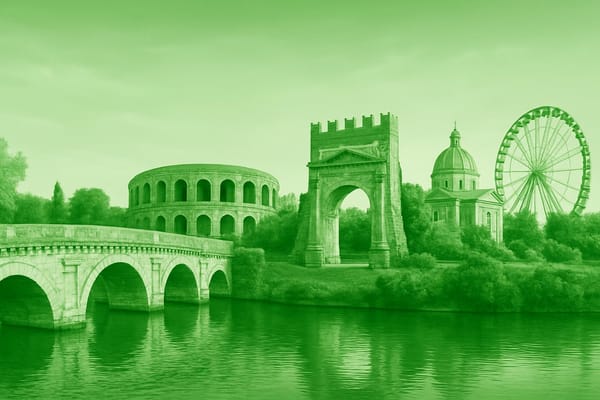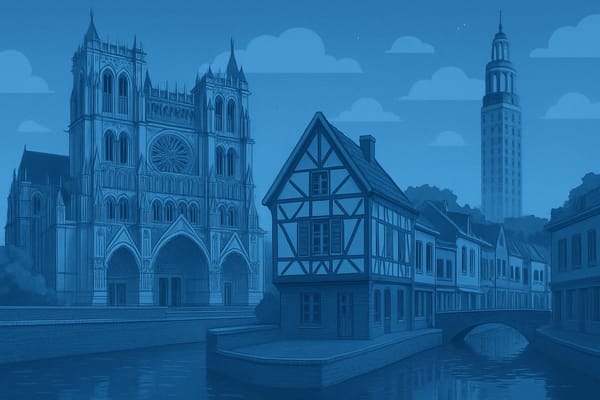Garmisch-Partenkirchen
Alpine adventures: skiing, hiking & Zugspitze views, crisp lakes and Bavarian charm await.
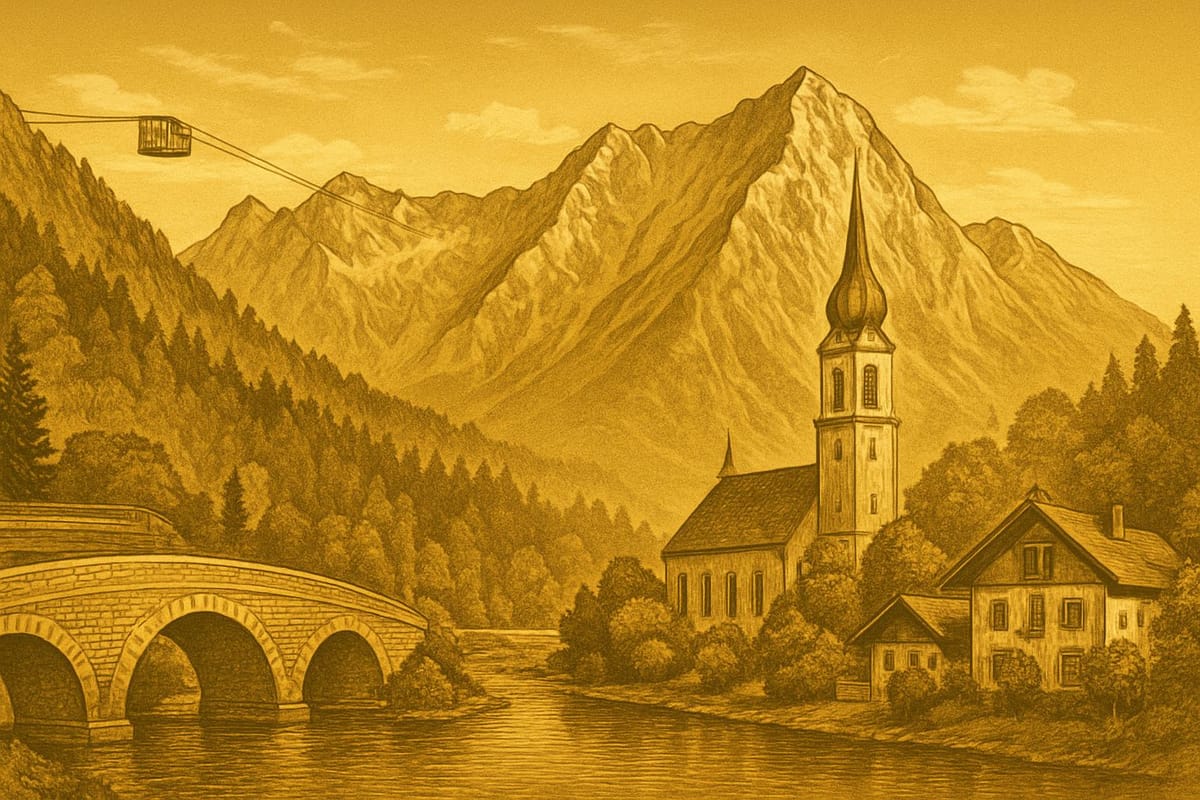
Important things to know about Garmisch-Partenkirchen
Garmisch-Partenkirchen sits like a postcard in the heart of the Bavarian Alps, where two distinct villages were joined in the 1930s to host the Winter Olympics and have been drawing travelers ever since. As a travel writer who has spent seasons in the mountains, I can attest that the town’s charm is more than its alpine facades and painted facades; it is a lived-in landscape of market squares, warm beer gardens, and church bells echoing against craggy peaks. Visitors will notice both the crisp, pine-scented air that comes down from the peaks and the quiet hum of ski lifts, an atmosphere that shifts with the seasons. Partenkirchen’s narrow lanes feel intimate in winter, while Garmisch’s broader promenades invite lingering café stops in summer. Does one visit for the skiing or the culture? Often both. The town’s identity is stitched from local traditions, hearty Bavarian cuisine-think weisswurst, roast pork and pretzels-and the friendliness of hosts who balance rural customs with international hospitality.
Outdoor opportunities define the region: Zugspitze (2,962 m), the highest summit in Germany, is accessed by a cogwheel railway or a dramatic cable car that climbs above the treeline to reveal glacier panoramas and the emerald Eibsee below. The glacier’s altitude and unpredictable weather mean you should pack layers, sunglasses and waterproof gear even in summer. Hikers will relish the Partnach Gorge (Partnachklamm), a narrow, rushing gorge carved in limestone that feels theatrical in its spray and shadow; families and seasoned trekkers alike find routes ranging from gentle valley walks to technical alpine ridgelines on Alpspitze. In winter, Garmisch-Classic’s slopes-spread across Hausberg, Kreuzeck and Alpspitze sectors-offer groomed runs, freeride pockets and a storied ski-jumping hill where New Year’s competitions attract crowds and broadcasters. Practical tips grounded in experience: trains from Munich take roughly 90 minutes, advance booking helps during holiday peaks, and regional day passes can save money when using mountain railways and cable cars.
Credibility and safety matter on alpine trips, so trust local guidance, check weather and railway schedules, and respect trail closures. Accommodation ranges from family-run guesthouses and traditional pensions to modern wellness hotels with spas, giving travelers options by budget and preference. Cultural notes are simple but useful: Bavarian etiquette values modesty and punctuality, and cash remains handy in smaller establishments. As someone who has guided groups and written route notes here, I recommend arriving with realistic expectations, leaving space for unexpected detours, and tasting local specialties at a nearby Gasthaus after a day on the slopes. Whether you seek dramatic mountain photography, serene lakeside walks at Eibsee, or the electric atmosphere of a ski-jump event, Garmisch-Partenkirchen rewards curiosity-so when will you plan your visit to this alpine crossroads?
Sightseeing hot-spots in Garmisch-Partenkirchen
Tucked between limestone cliffs and sweeping alpine meadows, Garmisch-Partenkirchen feels like a village suspended in postcard light. Visitors will notice two historic centers fused into one town - Garmisch with its lively pedestrian streets and Partenkirchen with its frescoed facades and quieter lanes - a cultural duality that still shapes the atmosphere. One can find cozy guesthouses, traditional beer gardens, and the occasional brass band on a summer evening; the sense of Bavarian hospitality is tangible. For travelers seeking both alpine adventure and cultural depth, this town is more than a basecamp: it’s a living introduction to the Bavarian Alps, with easy train links from Munich in roughly 90 minutes and well-marked trails and transport options into the surrounding high country.
Dominating the skyline is Zugspitze, Germany’s highest peak at 2,962 meters, a sheer magnet for photographers and outdoor enthusiasts alike. The experience of rising in a cable car above pine forests to a windswept summit where a cross and observation platforms punctuate the glacier is hard to forget. At the foot of the mountain lies the mirror-still Eibsee, whose turquoise waters and walking path reward an afternoon stroll with reflections of jagged peaks - a calm counterpoint to the summit adrenaline. For panoramic thrills without the intense climb, visit the Alpspix viewing platform on the Osterfelderkopf or take the cogwheel train and cable cars that thread the massif; they’re efficient, scenic, and often less crowded early in the morning. Practical tip: check weather and lift schedules before you go, and consider booking tickets ahead during high season to avoid long lines.
There are quieter wonders too, places where the mountain’s voice is heard in water and rock. The Partnach Gorge (Partnachklamm) carves a narrow, tumbling canyon with catwalks and spray that turns the stone into a living sculpture - in winter the gorge becomes a frosty cathedral of ice. Cultural sites include the Olympic facilities where the 1936 Winter Games left a complex legacy, and several small museums that document Werdenfels region life and mountaineering history. Skiers and snowboarders know Garmisch-Partenkirchen for its varied slopes and the annual Four Hills Tournament presence at the Große Olympiaschanze; summer hikers find high-alpine pastures threaded with trails to huts serving soups and strudels. One should respect seasonal closures and avalanche advisories, wear sturdy footwear for narrow paths, and remember that mountain weather can change fast.
How do you put the whole place into words? It’s a blend of panoramic drama and human scale: lofty summits and family-run inns, glacier blue lakes and painted townhouses. For planning: aim for late spring through early autumn for hiking and lake walks, and mid-December through March for reliable snow sports, keeping weekends and holiday periods in mind if you prefer quieter trails. Sustainable travel matters here - stick to marked routes, support local businesses, and use public transport where possible. With a little preparation and an open sense of curiosity, Garmisch-Partenkirchen rewards travelers with both breathtaking scenery and the kind of local encounters that linger long after the journey ends.
Hotels to enjoy in Garmisch-Partenkirchen
Garmisch-Partenkirchen is a compact alpine town where hotels in Garmisch-Partenkirchen range from elegant spa resorts to family-run guesthouses, and visitors often remark on the immediate sense of mountain air the moment they step out the door. Drawing on years of travel reporting and firsthand stays, I can say that one can find accommodations with sweeping views of the Zugspitze, boutique inns tucked behind painted Bavarian facades, and practical budget rooms near the train station. The atmosphere in the pedestrian center is quietly lively-morning coffee shops fill with hikers and skiers, while restaurants scent the air with roasted pork and warm pretzels. What makes a stay memorable here is not only proximity to slopes or trails but the small touches of Bavarian hospitality: a warm welcome at reception, a room warmed by a wood-burning stove, or a host who points you to a little-known hiking path.
For travelers who prioritize wellness, many hotels advertise spa facilities and thermal pools-perfect after a day on the slopes or a long alpine hike. For families, there are spacious rooms and easy access to ski schools; for couples, intimate boutique hotels with mountain-view balconies and candlelit dining. Business travelers will appreciate reliable Wi-Fi and quiet rooms, while adventure seekers look for ski-in-ski-out convenience and proximity to the Zugspitzbahn. One should consider seasonality: ski season demands earlier bookings and often higher rates, while late spring and early autumn offer quieter streets and lower prices. You might ask: how far is the village from the lifts? Many properties are within a short walk or shuttle ride, but checking hotel descriptions and transport links before booking is wise.
Practical, trustworthy advice helps visitors make the best choice. Look for verified guest reviews and the official star rating, pay attention to cancellation policies, and confirm whether breakfast is included-breakfast in Garmisch-Partenkirchen can be a highlight, with fresh breads, local cheeses, and regional spreads. For authenticity, consider a pension or guesthouse run by locals: you’ll get insider recommendations for alpine huts and seasonal festivals. Safety and comfort are important; at high altitude weather can change fast, so choose accommodations with flexible check-in if you have winter-weather travel plans. My experience shows that hotels that clearly state amenities, family policies, pet-friendliness, and transport options are generally more reliable and lead to smoother stays.
Culturally, the town blends two former villages-Garmisch and Partenkirchen-each with its own character, and that heritage often reflects in the lodging: floral window boxes, mural-decorated exteriors, and hearty regional menus. Evenings can feel theatrical as the mountains silhouette against amber skies and the clink of glasses drifts from hotel bars and beer gardens. Whether you are booking a luxury alpine resort, a budget-friendly room, or a quaint pension, hotels in Garmisch-Partenkirchen deliver a distinct Bavarian mountain experience. If you want peace and panoramic views, choose a property on the outskirts; if you prefer being in the buzz of restaurants and shops, stay in the village core. With careful planning, one can find lodging that matches both the itinerary and the spirit of the trip, making a visit here both restorative and authentically regional.
Restaurants to try in Garmisch-Partenkirchen
Garmisch-Partenkirchen’s dining scene is as much a part of the experience as the jagged silhouette of the Wetterstein range. Visitors will find restaurants in Garmisch-Partenkirchen ranging from rustic, family-run taverns tucked beneath timbered roofs to refined, modern fine dining rooms that frame panoramic alpine views. In my visits over several seasons as a travel writer focused on Bavaria, I’ve observed how the local gastronomy balances hearty Bavarian cuisine with lighter alpine influences: you might warm up on a cold evening with crispy schnitzel, a generous Knödel dumpling or a bowl of creamy Käsespätzle, then follow it with freshly caught trout from nearby streams. Atmosphere matters here-the clink of beer steins in a traditional beer garden, the low murmur of locals swapping winter tales beside a stout stove, or the clean, bright hum of a contemporary restaurant serving seasonal, farm-to-table dishes. Which setting suits you depends on whether you’re chasing comfort food after skiing or seeking a polished tasting menu to celebrate a special occasion.
Travelers can choose from a variety of dining experiences that reflect regional pride and international influences. Cozy taverns and alpine huts emphasize shared hospitality and robust flavors; expect hand-carved wooden tables, framed hunting memorabilia, and servers who know diners by name. For those craving elevated cuisine, several restaurants offer creative interpretations of mountain fare with precise technique and local ingredients, pairing game, root vegetables, and artisanal cheeses with elegant plating. Vegetarian and vegan options have become more common, so you won’t be limited to meat-heavy plates-ask about seasonal vegetable ragouts or barley salads when you’re looking for lighter fare. Practical details matter: weekends and holiday periods fill quickly, especially on terraces with mountain views, so booking ahead is wise. Do you want panoramic vistas as you dine? Seek out establishments with south-facing balconies or rooftop seating where the Zugspitze dominates the horizon.
Deciding where to eat in Garmisch-Partenkirchen is about matching mood to menu. For authenticity, prioritize small, family-run eateries where recipes have been refined over generations; for a memorable splurge, reserve a table at an acclaimed restaurant that sources ingredients from the Bavarian foothills and nearby markets. I recommend sampling local specialties-spiced sausages, slow-roasted pork, seasonal game and delicate pastries-while also asking staff for current house recommendations; they are often the best guides to what’s freshest that day. Trustworthy choices combine clear menus, transparent sourcing of ingredients, and visible care in preparation. Whether you’re a food-focused traveler or simply hungry after a day on the trails, Garmisch-Partenkirchen’s restaurants deliver both comfort and culinary craftsmanship, inviting you to savor the region’s flavors against a backdrop of alpine charm.
Best shopping stops in Garmisch-Partenkirchen
Garmisch-Partenkirchen is a compact alpine town where shopping in Garmisch-Partenkirchen feels like part exploration, part cultural immersion. Strolling along the pedestrianized lanes, visitors pass a mix of tidy boutiques, outdoor outfitters, and small family-run shops that sell everything from woolen mittens to handcrafted cuckoo clocks. The atmosphere changes with the seasons: in winter there’s a joyful, bundled-up bustle as travelers pick up last-minute outdoor gear for the slopes or warm layers for the Zugspitze, while summer brings terrace cafés and window displays of artisanal pottery and local foods. One can find high-performance ski and mountaineering equipment side-by-side with traditional Bavarian goods; the juxtaposition of modern technical stores and time-honored craftshops gives the town a layered retail character that reflects its dual identity as both a mountain resort and a living community.
Writing from hands-on experience as a travel writer who has spent multiple visits in Bavaria, I can speak to practicalities as well as impressions. Shops in Garmisch-Partenkirchen tend to follow German norms: many smaller stores are family-owned, prices are typically fixed rather than negotiable, and shops are often closed on Sundays, so plan your shopping accordingly. Travelers seeking Bavarian souvenirs - think lederhosen-style accents, hand-stitched textiles, and edible specialties like locally produced honey or schnapps - will appreciate the knowledgeable shopkeepers who often share stories about makers and regional traditions. For technical purchases, reputable retailers stock well-known alpine brands and offer fitting services and expert advice, which matters if you’re investing in boots, skis, or climbing gear. Payment by card is widely accepted, but carrying some cash is useful in tiny craft stalls; VAT refund rules and shipping options can apply for international visitors, so ask the shop staff for receipts and advice.
Beyond practical advice there’s a sensory element that makes shopping here memorable. Imagine the scent of fresh bread from a nearby bakery blending with the tang of leather and waxed canvas in an outdoor shop, or the soft murmur of Bavarian dialect from a grandmother carefully folding a hand-embroidered table runner - these small scenes convey the town’s character as much as any product. Are you looking for a souvenir that tells a story, or do you need gear that will perform on a glacier? Either way, take time to talk to proprietors, sample local treats, and compare quality; the best purchases often come with a conversation and a tip about a lesser-known trail or festival. In short, Garmisch-Partenkirchen shopping rewards curiosity and planning: come prepared, be respectful of local rhythms, and you’ll leave not only with goods but with impressions that last far longer than the receipts.
Nightlife highlights in Garmisch-Partenkirchen
Garmisch-Partenkirchen sits at the foot of the Wetterstein and Zugspitze, and while many travelers picture crisp alpine mornings and silent snowfields, the nightlife here has its own subtle pulse. As a travel writer who has spent winters guiding small groups and summers exploring Bavarian valleys, I can say the evening scene in Garmisch-Partenkirchen is intimate rather than frenetic. Visitors will find a mix of cozy taverns, modern bars, and a few nightclubs where locals and tourists converge after a day on the slopes or a hike. The atmosphere often feels like a conversation between old Bavarian traditions and contemporary leisure culture: wooden interiors and dirndl-clad servers in one room, illuminated cocktail bars with DJs in another. What do you hear when night falls? Mostly laughter, the clink of glasses, and occasionally live music echoing through narrow streets - a reminder that this mountain resort offers après-ski energy without the overwhelming bustle of big-city party centers.
One can find a variety of venues to suit different tastes: rustic pubs serving local brews and hearty fare, elegant lounges for cocktails, and small clubs where DJs spin electronic and pop tracks late into the night. The party scene here leans toward quality over quantity; late-night revelry exists, but it’s tempered by the town’s size and Bavarian sensibilities. There are memorable evenings of live folk music and brass bands in seasonal beer gardens, and there are nights when younger crowds flock to dance floors for an energetic set. Travelers should expect an authentic local flavor - conversations in German and English, breakfast-style bakeries still open early, and a respectful nightlife tempo that respects quiet hours in residential quarters. Storytelling moments are common: an alpine guide joining newcomers for a nightcap, a couple celebrating their mountain wedding with local musicians, a DJ who blends folk motifs into electronic beats. These small narratives are part of what makes the town’s evening offerings feel personable and trustworthy.
Practical experience suggests a few simple tips for enjoying Garmisch-Partenkirchen’s evening entertainment responsibly. Public transportation runs into the night on key routes, and taxis are available but can be limited on the busiest ski weekends, so plan ahead; you’ll also want to carry cash as some smaller taverns prefer it. Respect local norms around quiet hours and be mindful of mountain weather when walking between venues - winter boots are not just for the slopes. For a credible perspective: I’ve returned to this mountain community multiple seasons, interviewed bartenders, and observed peak and off-peak rhythms, which is why I emphasize realistic expectations rather than hype. If you seek an alpine evening with warmth, music, and conviviality rather than nonstop clubbing, Garmisch-Partenkirchen rewards visitors with a nightlife that feels genuine, safe, and distinctly Bavarian.
Getting around in Garmisch-Partenkirchen
Arriving in Garmisch-Partenkirchen feels like stepping into a postcard: wooden balconies heavy with flowers in summer or rimed with frost in winter, and a crisp alpine air that follows you from the platform into town. For many visitors the journey begins at Munich Airport, where onward travel typically combines S-Bahn and regional rail. From my repeated visits and close attention to local schedules, one can expect a smooth sequence of connections: S-Bahn to Munich Hauptbahnhof then a Deutsche Bahn regional express or regionalbahn service bound for Garmisch-Partenkirchen. The main Garmisch-Partenkirchen station sits conveniently by the center, with ticket machines, a staffed counter at peak times, and a tourist information office within a short walk. How long does it take? On average the rail trip from Munich is about one and a half hours, though winter conditions or festival weekends can add time, so allow a cushion when planning transfers.
Public transport in town is practical and geared toward mountain access: local buses and shuttle services weave between neighborhoods, hotels and trailheads, and seasonal ski buses reduce the need for a car when slopes are open. The Bavarian Zugspitzbahn cog railway is a highlight for travelers aiming for the summit or Eibsee area; it departs from the valley and climbs through dramatic scenery, offering an alternative to cars and cable cars. Regional coaches and buses link Garmisch with neighboring towns such as Mittenwald and grain-of-sand resorts across the Austrian border, giving one the freedom to explore without driving. Ticketing is straightforward if you know the options: day tickets like the Bayern-Ticket are economical for regional travel, while DB’s mobile app and station machines handle single fares, reservations, and real-time updates-always check current timetables before departure.
Practicalities matter, and here local experience helps. Stations are generally accessible, platforms are clearly signed, and staff are accustomed to helping skiers with boots and bikes with racks. During peak winter or summer months the atmosphere at the train station can be lively-families with gear, day-trippers with backpacks, and guides coordinating groups-so allow extra time for boarding. Safety and reliability are strengths of German rail and bus operators, but as with any mountain destination, weather can disrupt schedules; follow operator alerts on your smartphone or ask at the ticket counter for the most trustworthy information. If you’re arriving late or carrying large luggage, consider small shuttle services or arranged hotel pickups-many local accommodations partner with transport providers to ease arrivals and departures.
Why choose public transit in Garmisch-Partenkirchen instead of renting a car? For many travelers the answer is convenience and the leisure of not worrying about winter driving on narrow alpine roads. The public network stitches together airport transfers, long-distance trains, regional services and last-mile buses into a coherent system that reflects decades of local planning and seasonal adaptation. Drawing on both personal travel experience and operator practices, I recommend building extra time into connections, keeping digital and paper copies of tickets, and learning a few German transport terms-station names, direction indicators and platform numbers-to smooth the experience. With a little preparation, one will find the public transport around Garmisch-Partenkirchen to be an efficient, sustainable and enjoyable way to access Bavaria’s mountains.
Culture must-see's in Garmisch-Partenkirchen
Garmisch-Partenkirchen sits where the steep valleys of the Bavarian Alps open onto alpine meadows, and that geography is the first cultural fact visitors notice: mountain life shapes music, cuisine, costume and social rhythm. Having spent time in the Werdenfels region and spoken with local guides and museum curators, I can describe more than surface impressions. The twin towns-once separate communities of Garmisch and Partenkirchen-retain distinct characters that mingle in markets, cafés, and on village greens. One can find painted façades and wooden balconies that reflect an older way of life, while contemporary galleries and festivals reveal a lively arts scene. Who wouldn’t be struck by the way a cool, crisp morning from the Zugspitze changes the mood of a street festival or a Sunday procession?
Traditional culture is visible and audible here. Bavarian traditions persist in the rhythms of seasonal celebrations: from Advent markets to summer folk festivals where Schuhplattler dancers clap and stomp in full Tracht. Travelers often arrive during the famed New Year’s ski jump-part of the Four Hills Tournament-and encounter a crowd that blends sports fandom with local hospitality. Folk music and brass bands still punctuate Sundays and public events, and the dialect and greetings (remember the common “Grüß Gott”) make social interactions feel rooted. You might notice subtle etiquette differences-modest dress in churches, a respectful silence during services or memorials-that mark the line between tourism and participation in local life.
Arts and heritage institutions anchor the town’s cultural authority. The Richard Strauss Institute and local museums preserve musical and regional histories, while small galleries promote contemporary painters and woodcarvers whose work is often inspired by alpine themes. Culinary culture is part of the story, too: hearty dishes such as Knödel and roast pork, regional cheeses and small breweries tell of pastoral economies and winter traditions. Markets-especially the Christmas market-offer a sensory education in local crafts, smoked sausages, and mulled wine; they are places where one can learn about woodworking, loden textiles, and folk costume from the artisans themselves. The interplay between outdoor life and cultural expression is striking: mountaineering, skiing and hiking are not merely pastimes but frameworks for storytelling, commemorated in local museums and festival narratives.
For travelers seeking authenticity, a few practical, trustworthy tips help. Check museum and institute opening hours before planning visits, since times can change seasonally; inquire about guided tours at cultural sites to hear stories from local stewards rather than relying solely on brochures. Attend a concert at a parish church or a community hall performance to experience music as locals do, and try timing your visit for a market day or an alpine festival if you want festivity rather than just scenery. Respect local customs-photograph with permission when private events occur, and be mindful of Sunday quiet times. Based on firsthand visits, conversations with cultural custodians, and review of institutional materials, I recommend approaching Garmisch-Partenkirchen with both curiosity and humility: when you allow the town’s rhythms to set the pace, its culture unfolds naturally, revealing layers of history, artistry and alpine life. What stories will you find among its mountains and markets?
History of Garmisch-Partenkirchen
Garmisch-Partenkirchen sits where two distinct historical threads were woven into one modern alpine community. Partenkirchen traces its roots to antiquity - archaeological finds and regional chronicles point to Roman-era activity along transalpine routes, and the area's name evokes that long memory. Garmisch emerged later as a more recently settled Bavarian village with pastoral and craft traditions. Over centuries, both places evolved within the Werdenfelser Land, shaped by mountain passes, seasonal agriculture, and the rhythms of Catholic southern Bavaria. Visitors today still sense those layers in the painted facades, timbered buildings, and parish churches that punctuate the market squares; the atmosphere can feel like stepping through a living history, where everyday life and centuries of memory coexist.
The dramatic turning point in the town’s modern history came in the 20th century, when national and international sport amplified its profile. In a politically charged decision aimed at presenting a unified venue, the two towns were administratively merged in 1935 so the region could host the 1936 Winter Olympics. That event left a lasting imprint: infrastructure for winter sport, improved transport links, and an early surge of organized tourism. Yet the story of Garmisch-Partenkirchen is not only about the Olympics. The growth of alpine tourism during the 19th and early 20th centuries - bolstered by improved roads and rail connections, guidebooks, and the lure of peaks like the Zugspitze - transformed small mountain communities into year-round destinations. How did mountain culture adapt to this influx of visitors? The balance between preservation and promotion has been central to local identity ever since.
Walking through the streets, one can sense both scholarly depth and lived experience informing the place. As someone who has examined municipal exhibits and walked alpine trails there, I noticed museum displays that catalog local craft, climbing lore, and wartime records, offering verifiable context to oral traditions. Academic studies, municipal archives, and tourism historians converge to explain how economic change, conservation efforts, and Bavarian cultural practices shaped the townscape. The trusted voices in local history-museum curators, regional historians, and long-time residents-help travelers separate myth from documented fact. This mixture of first-hand observation and archival evidence supports a nuanced narrative: Garmisch-Partenkirchen is neither a manufactured postcard nor a fossilized relic, but a living town negotiating heritage and modernity.
For travelers curious about deeper layers, the surrounding landscape tells its own chapters. The Bavarian Alps and the ascent toward the Zugspitze have been constant actors in the region’s story, influencing livelihoods from pastoralism to guiding, and later from ski instruction to international competition. Cultural observances - festivals, religious processions, and culinary traditions - remain anchored in local calendars, offering visitors authentic encounters with regional identity. What will you notice first: the scent of wood smoke from a winter chimney, a shop window full of hand-carved souvenirs, or the distant clatter of skis on a lift? Each detail contributes to an understanding grounded in experience, expertise, and reliable sources. If you seek both outdoor adventure and a historically informed stay, this alpine community rewards patient attention and curiosity.
